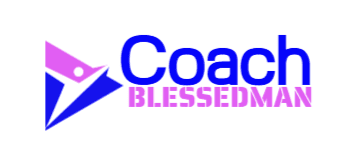The Complete Guide to Social Media Marketing: Strategies for Digital
Success
Part of the Digital Marketing Mastery Hub

Social media marketing is a dynamic and indispensable pillar of digital marketing, enabling businesses to connect with audiences, build brand loyalty, and drive measurable results. With billions of users across platforms like Instagram, LinkedIn, TikTok, and more, social media offers unparalleled opportunities to engage, inform, and convert. This Complete Guide to Social Media Marketing provides a comprehensive, evergreen roadmap to creating a winning strategy. From understanding platforms to crafting content, leveraging influencer marketing, and measuring success, this guide equips you with actionable, SEO-optimized strategies to outrank competitors and establish your brand as a digital authority. Whether you’re a beginner or an experienced marketer, these insights will help you harness social media to achieve your goals on your Digital Marketing Journey.
What is Social Media Marketing?
Social media marketing involves using social platforms to promote products, services, or content, fostering engagement and driving business objectives like traffic, leads, or sales. It combines organic strategies (e.g., posts, stories) with paid tactics (e.g., ads, influencer partnerships) to reach targeted audiences. Unlike traditional marketing, social media allows real-time interaction, enabling brands to build communities and respond to feedback instantly.
The power of social media lies in its ability to humanize brands, amplify reach, and deliver measurable results. By creating content that resonates with your audience’s interests and behaviors, you can boost visibility, enhance credibility, and integrate seamlessly with other digital marketing efforts.
Why Social Media Marketing Matters
Social media is a must-have strategy for businesses aiming to thrive in the digital age. Here’s why:
- Massive Reach: Platforms host billions of active users, offering access to diverse audiences worldwide.
- Engagement: Interactive formats like comments, likes, and shares foster two-way communication.
- Cost-Effective: Organic and paid strategies fit any budget, delivering high ROI compared to traditional ads.
- Brand Awareness: Consistent posting increases visibility and recognition.
- Data-Driven: Analytics tools provide insights into audience behavior, enabling optimization.
Core Components of a Social Media Marketing Strategy
A successful social media strategy requires planning, content creation, platform-specific tactics, and performance tracking. Below, we explore each component, with detailed insights into major platforms and influencer marketing.
Planning Your Social Media Strategy
A well-defined plan aligns your social media efforts with your business goals and audience needs.
Define Your Objectives
Set clear, measurable goals, such as increasing followers by 10%, driving 500 website visits monthly, or boosting sales by 15%. Use SMART criteria (Specific, Measurable, Achievable, Relevant, Time-bound) to ensure focus.
Identify Your Audience
Create buyer personas based on demographics, interests, and behaviors. For example, if targeting entrepreneurs for your business, focus on platforms like LinkedIn and content about business growth.
Choose the Right Platforms
Not all platforms suit every business. Select those where your audience is most active, balancing time and resources. Below, we dive into major platforms with tailored strategies.
Develop a Content Calendar
Plan your posting schedule to ensure consistency and variety. Include content types (e.g., posts, stories, videos) and key dates (e.g., holidays, product launches).
Understanding Major Social Media Platforms
Each platform has unique features, audiences, and best practices. Below, we detail strategies for key platforms relevant to digital marketing.
Instagram: Visual Storytelling
Instagram’s 2 billion+ monthly users make it ideal for visual brands, especially in lifestyle, fashion.
- Audience: Primarily 18–34-year-olds, favoring aesthetic content.
- Content Types: Posts, Stories, Reels, IGTV, and Live videos.
- Best Practices:
- Use high-quality images or videos to showcase products or tips (e.g., “5 Digital Marketing Hacks” Reels).
- Leverage Stories for behind-the-scenes content or polls to boost engagement.
- Post Reels to tap into viral trends, increasing discoverability.
- Use 5–15 relevant hashtags (e.g., #DigitalMarketingTips) to expand reach.
- Paid Options: Run Instagram Ads (photo, video, carousel) via Meta Ads Manager to target specific demographics.
LinkedIn: Professional Networking
LinkedIn’s 1 billion+ users, mostly professionals and B2B audiences, make it perfect for thought leadership and lead generation.
- Audience: Professionals, business owners, and decision-makers aged 25–54.
- Content Types: Articles, posts, videos, polls, and LinkedIn Stories.
- Best Practices:
- Share long-form articles on industry trends, like “The Future of Digital Marketing.”
- Post actionable insights or case studies to establish authority.
- Engage in groups or comment on others’ posts to build connections.
- Use LinkedIn Live for webinars or Q&A sessions to showcase expertise.
- Paid Options: Sponsored Content, InMail, or Lead Gen Forms target job titles or industries.
Actionable Tip: Publish a 500-word LinkedIn article on “How to Monetize Skills Online,” linking to your website. Comment on industry leaders’ posts to increase visibility.
TikTok: Viral Short-Form Video
TikTok’s 1.5 billion+ monthly users, primarily Gen Z and Millennials, thrive on creative, short-form videos, making it ideal for viral reach.
- Audience: 16–34-year-olds, favoring entertaining or educational content.
- Content Types: 15–60-second videos, duets, and live streams.
- Best Practices:
- Create authentic, engaging videos, like “3 Digital Marketing Myths Busted” in 30 seconds.
- Use trending sounds, effects, or challenges to boost algorithmic visibility.
- Post 3–5 times weekly to stay relevant without overwhelming followers.
- Engage with comments to build a community and signal activity to the algorithm.
- Paid Options: In-Feed Ads, Branded Hashtags, or TopView Ads reach targeted audiences.
Actionable Tip: Film a 20-second video debunking a digital marketing myth, using a trending sound. Add a CTA like “Follow for more tips!” to grow your audience.
YouTube: Long-Form Video Content
YouTube, with 2.5 billion+ monthly users, is the second-largest search engine, ideal for educational content like tutorials or vlogs.
- Audience: Broad, spanning all ages, seeking in-depth or how-to content.
- Content Types: Tutorials, vlogs, product reviews, and playlists.
- Best Practices:
- Create 5–15-minute videos, like “How to Start Social Media Marketing,” optimized with keyword-rich titles (e.g., “Social Media Marketing for Beginners”).
- Use custom thumbnails with bold text and vibrant colors to increase click-through rates.
- Add captions and transcripts for accessibility and SEO.
- Organize videos into playlists (e.g., “Digital Marketing 101”) for better user experience.
- Paid Options: Run TrueView Ads or Non-Skippable Ads to promote videos.
Actionable Tip: Produce a 10-minute tutorial on “Setting Up Instagram Ads,” optimized with keywords and a custom thumbnail. Promote it on your blog and social channels.
Pinterest: Visual Discovery
Pinterest’s 500 million+ monthly users, mostly women aged 25–44, use it for inspiration, making it great for niche content like digital marketing tips or course promotions.
- Audience: Planners seeking ideas for business, education, or lifestyle.
- Content Types: Pins, Idea Pins, and video Pins.
- Best Practices:
- Create vertical Pins (2:3 ratio) with bold text, like “Top 10 Social Media Tips.”
- Use keyword-rich descriptions and hashtags (e.g., #SocialMediaMarketing) to improve discoverability.
- Link Pins to your website or blog to drive traffic.
- Post Idea Pins to showcase step-by-step guides, like “How to Plan Your Social Media Calendar.”
- Paid Options: Promoted Pins target interests or behaviors.
Actionable Tip: Design a Pin titled “Free Social Media Checklist” linking to a lead magnet on your site. Use Canva for professional visuals and add 5–10 keywords in the description.
X Platform: Real-Time Engagement
The X Platform’s 500 million+ monthly users favor real-time conversations, making it ideal for trending topics and community building.
- Audience: Diverse, including professionals, creators, and news enthusiasts.
- Content Types: Posts (280 characters), threads, images, videos, and Spaces.
- Best Practices:
- Share concise, engaging posts, like “Boost your brand with these 3 social media tips.”
- Use threads to dive deeper into topics, like “Why Social Media is Key to Digital Success.”
- Join trending conversations with relevant hashtags to increase visibility.
- Host Spaces for live audio discussions, like “Q&A on Social Media Strategies.”
- Paid Options: Promoted Posts or Amplify Ads target specific audiences.
Actionable Tip: Write a 5-post thread on “Common Social Media Mistakes,” with each post offering a tip. Use 1–2 hashtags to join relevant conversations.
Crafting Engaging Social Media Content
High-quality content is the heart of social media marketing, designed to attract, engage, and convert your audience.
Content Types
- Educational: Share tips, tutorials, or industry insights (e.g., “How to Use Instagram Stories for Business”).
- Entertaining: Post memes, quizzes, or humorous videos to humanize your brand.
- Inspirational: Share success stories or motivational quotes, like “How Jane Grew Her Business with Social Media.”
- Promotional: Highlight products, services, or offers, like a discount on your product.
- User-Generated Content (UGC): Repost customer reviews or fan content to build trust.
Content Creation Best Practices
- Know Your Audience: Tailor content to their preferences, like short videos for TikTok or articles for LinkedIn.
- Be Authentic: Share behind-the-scenes content or real stories to connect emotionally.
- Use Visuals: Incorporate images, videos, or infographics to boost engagement. For example, a carousel post on Instagram can showcase “5 Social Media Tools.”
- Post Consistently: Aim for 3–7 posts weekly per platform, depending on audience expectations.
- Include CTAs: Encourage actions like “Follow us,” “Visit our site,” or “Comment below.”
Actionable Tip: Create a carousel post for Instagram with “Top 5 Social Media Trends,” using bold visuals and a CTA to visit your blog for more insights.
Content Calendar Planning
Organize your content with a calendar to ensure variety and consistency. Include:
- Content Mix: Balance educational, entertaining, and promotional posts (e.g., 60% educational, 20% entertaining, 20% promotional).
- Posting Frequency: Vary by platform (e.g., 1–2 daily on Instagram, 3–5 weekly on LinkedIn).
- Key Dates: Plan around holidays, launches, or industry events.
Actionable Tip: Use a tool like Hootsuite or Later to schedule one month of content, mixing posts, stories, and videos. Review engagement to adjust your mix.
Visite here to read our full guide on content marketing strategies
Leveraging Influencer Marketing
Influencer marketing, a subset of social media marketing, involves partnering with individuals who have established audiences to promote your brand. It’s highly relevant for amplifying reach and building trust, especially for your business.
Why Influencer Marketing Works
- Trust: Audiences trust influencers’ recommendations, with 61% of consumers trusting influencer endorsements over brand ads.
- Reach: Influencers expose your brand to new, engaged audiences.
- Authenticity: Influencers create relatable content that aligns with their followers’ interests.
Types of Influencers
- Nano-Influencers: 1,000–10,000 followers, high engagement, niche audiences.
- Micro-Influencers: 10,000–100,000 followers, strong trust, cost-effective.
- Macro-Influencers: 100,000–1 million followers, broad reach, higher costs.
- Mega-Influencers: 1 million+ followers, celebrity status, ideal for brand awareness.
Finding Influencers
- Platform Search: Use hashtags like #DigitalMarketing or #Entrepreneurship on Instagram or TikTok to find relevant influencers.
- Tools: Platforms like Upfluence, AspireIQ, or HypeAuditor identify influencers based on niche, audience, and engagement.
- Manual Research: Check competitors’ partnerships or explore X Platform threads for top leaders.
Collaborating with Influencers
- Define Goals: Decide if you want awareness, traffic, or sales (e.g., promoting your product or business).
- Craft a Pitch: Personalize outreach with details about why you chose them. Offer value, like free course access or commissions.
- Set Expectations: Agree on deliverables (e.g., 2 Instagram posts, 1 Story), timeline, and compensation.
- Track Results: Use unique links or promo codes to measure traffic or conversions.
Actionable Tip: Reach out to a micro-influencer in the digital marketing niche with a DM like, “Love your content on entrepreneurship! We’d like to collaborate to promote our course. Interested?” Include a link to your site.
Best Practices
- Choose Relevant Influencers: Ensure their audience aligns with your target market (e.g., entrepreneurs for business or product).
- Allow Creative Freedom: Let influencers craft authentic content that resonates with their followers.
- Disclose Partnerships: Ensure influencers use #ad or #sponsored to comply with regulations.
- Build Long-Term Relationships: Work with influencers repeatedly to strengthen trust and consistency.
Actionable Tip: Partner with a nano-influencer to create a TikTok video reviewing your course. Offer a free enrollment in exchange for a post with a trackable link.
Running Paid Social Media Campaigns
Paid ads amplify your organic efforts, delivering instant visibility and targeting precision.
Platform-Specific Ad Strategies
- Instagram/Facebook Ads: Use Meta Ads Manager to create carousel, video, or lead ads targeting interests like “digital marketing” or “online courses.”
- LinkedIn Ads: Run Sponsored Content or InMail campaigns targeting job titles like “Marketing Manager” or “Entrepreneur.”
- TikTok Ads: Create In-Feed Ads with trending sounds to reach younger audiences.
- YouTube Ads: Use TrueView Ads to promote tutorials, targeting keywords like “social media marketing.”
- Pinterest Ads: Promote Pins linking to lead magnets, targeting interests like “business tips.”
- X Platform Ads: Run Promoted Posts to boost threads or Spaces, targeting followers of industry leaders.
Ad Creation Tips
- Compelling Visuals: Use high-quality images or videos with bold text (e.g., “Join Our Free Webinar!”).
- Clear CTAs: Include actions like “Sign Up Now” or “Learn More.”
- Target Precisely: Use demographic, interest, or behavioral targeting to reach your ideal audience.
- Set a Budget: Start with $5–$10 daily per platform and scale based on results.
Actionable Tip: Create a $10/day Instagram ad promoting a lead magnet, like a “Social Media Checklist,” targeting entrepreneurs aged 25–45. Track conversions with a landing page.
Optimization Techniques
- A/B Testing: Test ad variations (e.g., different headlines or images) to identify top performers.
- Retargeting: Re-engage website visitors or email subscribers with tailored ads.
- Monitor ROI: Track cost-per-click (CPC) and cost-per-acquisition (CPA) to ensure profitability.
Actionable Tip: Run two versions of a LinkedIn ad with different CTAs (“Get Started” vs. “Join Now”) to see which drives more clicks. Use LinkedIn Analytics to optimize.
Measuring Social Media Marketing Success
Tracking performance ensures your strategy delivers results. Focus on these key metrics:
- Reach/Impressions: Number of users who see your content, indicating visibility.
- Engagement: Likes, comments, shares, and saves, showing audience interaction.
- Click-Through Rate (CTR): Percentage of users clicking links, measuring content effectiveness.
- Conversions: Actions like sign-ups, purchases, or downloads, tying to business goals.
- Follower Growth: Increase in followers, reflecting brand interest.
Analytics Tools
- Platform Insights: Use Instagram Insights, LinkedIn Analytics, or TikTok Analytics for native data.
- Google Analytics: Track website traffic from social campaigns with UTM parameters.
- Hootsuite/Sprout Social: Monitor multiple platforms’ performance in one dashboard.
- Bitly: Shorten and track link clicks for campaigns.
Actionable Tip: Set up a Google Analytics dashboard to track social media-driven traffic and conversions. Review monthly to optimize high-performing channels.
Common Social Media Marketing Mistakes to Avoid
Steer clear of these pitfalls to ensure success:
- Posting Inconsistently: Sporadic activity reduces visibility. Stick to a schedule.
- Ignoring Analytics: Without data, you can’t optimize. Review metrics regularly.
- Being Overly Promotional: Too many sales posts alienate audiences. Focus on value.
- Neglecting Engagement: Failing to respond to comments hurts community building.
- Using One-Size-Fits-All Content: Generic posts don’t resonate. Tailor to each platform.
Advanced Social Media Marketing Strategies
Once you’ve mastered the basics, these advanced tactics can elevate your efforts.
Social Listening
Monitor conversations about your brand or industry using tools like Brandwatch or Mention. Identify trends, address feedback, or join relevant discussions.
Actionable Tip: Use Mention to track keywords like “digital marketing” or your brand name. Respond to mentions or create content addressing audience questions.
User-Generated Content Campaigns
Encourage followers to create content about your brand, like reviews or tutorials, to build trust and amplify reach.
Actionable Tip: Launch a hashtag campaign, like #BlessedmanSuccess, asking followers to share how your tips helped them. Repost top entries to boost engagement.
Live Streaming
Host live sessions on Instagram, YouTube, or X Platform Spaces to connect in real-time. For example, a Q&A on “Social Media for Beginners” can attract new followers.
Actionable Tip: Schedule a monthly Instagram Live to answer audience questions. Promote it a week in advance to maximize attendance.
AI-Powered Insights
Use AI tools like Sprout Social or HubSpot to analyze audience behavior, recommend posting times, or predict content performance.
Actionable Tip: Try Sprout Social’s AI features to identify optimal posting times for your audience, increasing engagement by up to 20%.
Cross-Platform Integration
Integrate social media with other channels, like email or blogs, for a cohesive strategy. For example, share a blog post on X Platform and promote it via email.
Conclusion
Social media marketing is a powerful, evergreen strategy that drives engagement, builds communities, and supports your digital marketing goals. By understanding platforms, crafting compelling content, leveraging influencer marketing, and tracking performance, you can outrank competitors and establish your brand as a trusted authority. Start with a clear plan, tailor content to each platform, and experiment with advanced tactics like social listening or live streaming. With the strategies in this guide, you’re ready to create social media campaigns that resonate, engage, and convert on your product or business.

WARNING! 70% of The People Fails To Make MONEY Online Because of This: DISCOVER The Shocking Reasons Why
In this short article, I will tell you the reason why 70% of people on the internet do not make money online but before then
